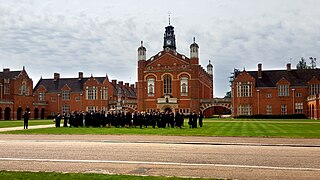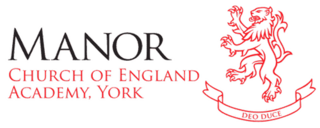
George Eastman was an American entrepreneur who founded the Eastman Kodak Company and helped to bring the photographic use of roll film into the mainstream. After a decade of experiments in photography, he patented and sold a roll film camera, making amateur photography accessible to the general public for the first time. Working as the treasurer and later president of Kodak, he oversaw the expansion of the company and the film industry.

Sir Sandford Fleming was a Scottish Canadian engineer and inventor. Born and raised in Scotland, he emigrated to colonial Canada at the age of 18. He promoted worldwide standard time zones, a prime meridian, and use of the 24-hour clock as key elements to communicating the accurate time, all of which influenced the creation of Coordinated Universal Time. He designed Canada's first postage stamp, produced a great deal of work in the fields of land surveying and map making, engineered much of the Intercolonial Railway and the first several hundred kilometers of the Canadian Pacific Railway, and was a founding member of the Royal Society of Canada and founder of the Canadian Institute.

Christ's Hospital is a public school with a royal charter, located to the south of Horsham in West Sussex. The school was founded in 1552 and the royal charter granted in 1553. Since its establishment, Christ's Hospital has been a charity school, with a core aim to offer children from disadvantaged backgrounds the chance of a better education.

Bluestocking is a term for an educated, intellectual woman, originally a member of the 18th-century Blue Stockings Society from England led by the hostess and critic Elizabeth Montagu (1718–1800), the "Queen of the Blues", including Elizabeth Vesey (1715–1791), Hester Chapone (1727–1801) and the classicist Elizabeth Carter (1717–1806). In the following generation came Hester Lynch Piozzi (1741–1821), Hannah More (1745–1833) and Frances Burney (1752–1840). The term now more broadly applies to women who show interest in literary or intellectual matters.

A friendly society is a mutual association for the purposes of insurance, pensions, savings or cooperative banking. It is a mutual organization or benefit society composed of a body of people who join together for a common financial or social purpose. Before modern insurance and the welfare state, friendly societies provided financial and social services to individuals, often according to their religious, political, or trade affiliations. These societies are still widespread in many parts of the developing world, where they are referred to as ROSCAs, ASCAs, burial societies, chit funds, etc.
Bishop Douglass Catholic School is a Roman Catholic co-educational secondary school and sixth form, situated in East Finchley area of the London Borough of Barnet, England. Its current Headmaster is Martin Tissot, a former pupil at the school.

George Frederick Wright was an American geologist and a professor at Oberlin Theological Seminary, first of New Testament language and literature, and then of "harmony of science and revelation". He wrote prolifically, publishing works in geology, history, and theology. Early in his career he was an outspoken defender of Darwinism, and later in life he emphasised his commitment to a form of theistic evolution.

The bluecoat is a style of dress code, traditionally worn in bluecoat schools.

The Grey Coat Hospital is a Church of England secondary school with academy status for girls in Westminster, London, England. In 2013, it had 1064 pupils including 40 boys in the Sixth Form. It is a specialist Language College.

Westminster City School is a state-funded secondary academy for boys, with a mixed sixth form, in Westminster, London. The school educates over 800 students, with links to more than 100 different cultures, in a central London location. The school offers places at Year 7 entry, each year, to boys of Christian faith, other world faiths, and those of no faith. The current headteacher is Peter Broughton, while the current deputy headteachers are Jen Lockyer and Simon Brown.
The uniforms of the United States Army distinguish soldiers from other service members. U.S. Army uniform designs have historically been influenced by British and French military traditions, as well as contemporary U.S. civilian fashion trends. The two primary uniforms of the modern U.S. Army are the Army Combat Uniform, used in operational environments, and the Army Green Service Uniform, worn during everyday professional wear and during formal and ceremonial occasions that do not warrant the wear of the more formal blue service uniform.

Moses Bruines Cotsworth was a British accountant, statistician, and calendar reformer. After emigrating to Canada he worked for the British Columbia provincial government and chaired the Civil Service Reform committee.

Manor Church of England Academy a coeducational secondary school in York, England, and since April 2011, a Specialist Arts College and Leadership Partner School. Manor's history and traditions extend back two hundred years, over several sites in the city. Manor is part of the multi-academy trust Hope Learning Trust, York.

Grays Court is a Grade I listed house in York, England. The house is within the city walls near York Minster. Dating back in part to 1080 and commissioned by the first Norman Archbishop of York to provide the official residence for the Treasurers of York Minster, it is one of the oldest continuously occupied dwellings in the United Kingdom.

Catherine Cappe or Catherine Harrison was a British writer, diarist and philanthropist.

Elisabeth Achelis was founder of the World Calendar Association in 1930 and served as its president.
Charlotte Richardson or Charlotte Smith was a British poet.
Faith Gray born Faith Hopwood was a British diarist, school founder who, with Catharine Cappe, improved education in York for poor girls and at the Grey Coat School.

Marygate is a street in York, England, running just north of the city centre. Built in the Middle Ages, it gets its name from St Mary's Abbey and the Viking word "gata," meaning street. The area where the street lies was outside the walls of the Roman city of Eboracum, and represented the northern limit of the settlement; to the north, the land was used only for burials. The street runs south-west, from Bootham, down to the River Ouse.

The Garth is a historic building on Marygate, immediately north of the city centre of York, in England.



















